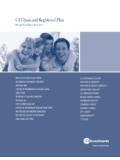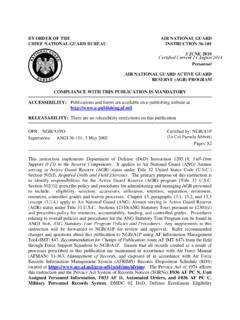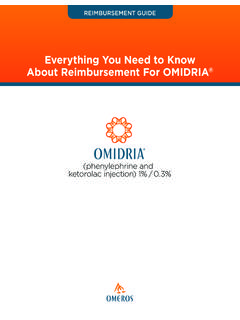Transcription of AERONAUTICAL INFORMATION CIRCULAR - Nav …
1 18 OCT 12 Note: Cette INFORMATION est aussi disponible dans l autre langue officielle. Page 1 of 8 AERONAUTICAL INFORMATION CIRCULAR 35/12 NEW FLIGHT PLAN FORM (Replaces AIC 31/12) Introduction Amendment 1 to the 15th Edition of the Procedures for Air Navigation Services-Air Traffic Management, Doc 4444 (PANS-ATM), which becomes effective on 15 November 2012, aims to update the flight plan form established by International Civil Aviation Organization (ICAO), to meet the needs of aircraft with advanced capabilities, as well as the developed requirements of the automated air traffic management (ATM) systems.
2 The new flight plan addresses functionalities and technologies of air navigation such as global navigation satellite system (GNSS), area navigation (RNAV), required navigation performance (RNP), performance-based navigation (PBN), data links, the automatic dependent surveillance-broadcast (ADS-B) and automatic dependent surveillance-contract (ADS-C). These changes are more substantially reflected in the content of fields 10 and 18 of the flight plan form. Such data shall be considered by the ATM systems, in order to make the necessary air traffic planning INFORMATION available for the air traffic controller.
3 It also enables alerting, whenever there is a modification to reported data that may have an impact on control planned actions. Purpose of CIRCULAR This CIRCULAR advises pilots of upcoming changes to the flight plan form. Key Changes A. Field 10a Introduces new indicators for COM and NAV equipment and capabilities B. Field 10b Introduces new indicators for SURVEILLANCE equipment and capabilities C. Field 18 Introduces new indicators, definitions and requirements for OTHER Equipment. D. New relationships and dependencies between fields 10a and 18 E.
4 Date of flight requirements and processing Note: ICAO standards will allow for submission of flight plan INFORMATION up to 120 hours prior to flight. However, Canada will remain at a maximum of 24 hours prior to flight. F. Flight plan message content and uniqueness checking G. Transition phase requirements (NEW and PRESENT formats) 18 OCT 12 Page 2 of 8 AERONAUTICAL INFORMATION CIRCULAR 35/12 Overview of Changes Content of the Amendment Field 7: Aircraft identification Amendment 1 states that the field 7 of the filed flight plan (FPL) must allow the introduction to 7 alphanumeric characters, without the possibility of using special characters (hyphen or symbols).
5 Field 8: Flight rules and type of flight The new format enables the inclusion of one or more changes of flight rules along the path defined in the flight plan, through the specification of characters "Y" or "Z" for the first leg of the flight. With this option, the respective points of rules alteration must be defined in field 15 Route. Field 10: Equipment and Capabilities Radio Communication, Navigation and Approach Aid Equipment and Capabilities Significant change: Standard equipment no longer includes automatic direction finder (ADF) and is now considered to be very high frequency (VHF) radiotelephone (RTF), VHF omnidirectional range (VOR) and instrument landing system (ILS) The tables below list possible equipment and capabilities codes that are entered in field 10a.
6 The first column lists the code, the second column lists the present meaning of the code, and the third column lists the new changes that are effective 15 November 2012. 18 OCT 12 AERONAUTICAL INFORMATION CIRCULAR 35/12 Page 3 of 8 18 OCT 12 Page 4 of 8 AERONAUTICAL INFORMATION CIRCULAR 35/12 Surveillance Equipment and Capabilities New Added SSR Mode S Codes: E Transponder Mode S, including aircraft identification, pressure-altitude, and extended squitter (ADS-B) capability H Transponder Mode S, including aircraft identification, pressure-altitude, and enhanced surveillance capability L Transponder Mode S, including aircraft identification, pressure-altitude, extended squitter (ADS-B), and enhanced surveillance capability Note.
7 Enhanced surveillance capability is the ability of the aircraft to down-link aircraft derived data via a Mode S transponder. ADS-B B1 ADS-B with dedicated 1090 MHz ADS-B out capability B2 ADS-B with dedicated 1090 MHz ADS-B out and in capability U1 ADS-B out capability using universal access transceiver (UAT) U2 ADS-B out and in capability using UAT V1 ADS-B out capability using VHF Data Link (VDL) Mode 4 V2 ADS-B out and in capability using VDL Mode 4 ADS-C D1 ADS-C with future air navigation systems (FANS) 1/A capabilities G1 ADS-C with AERONAUTICAL telecommunication network (ATN) capabilities Note.
8 Additional surveillance application should be listed in field 18 following the indicator SUR/. 18 OCT 12 AERONAUTICAL INFORMATION CIRCULAR 35/12 Page 5 of 8 Field 13: Departure aerodrome and time For cases where the aircraft takes off from a heliport or aerodrome without ICAO designator, the filing entity will note ZZZZ in field 13 of the FPL and specify in field 18 after the indicator DEP/, the name and location of the aerodrome or the first point of the route or beacon preceded by DEP/..if the aircraft has not taken off from the aerodrome Note: In Canada Pilots may only file a flight plan or flight itinerary up to 24 hours in advance of the departure time.
9 Field 15: Route Will also enable points of a path to be defined by using a magnetic bearing and distance in relation to a significant point defined by geographical coordinates as reference. Field 18: Other INFORMATION The following indicators shall be considered valid for registration in field 18 of FPL: STS/, PBN/, NAV/, COM/, DAT/, SUR/, DEP/, DEST/, DOF/, REG/, TSE/, SEL/, TYP/, CODE/, DLE/, OPR/, ORGN/, PER/, ALTN/, RALT/, TALT/, RIF/ and RMK/. The sequence presented above shall be accomplished when completing field 18 of the FPL, being that use of indicator not specified by the amendment may generate a rejection, an incorrect processing, or loss of INFORMATION .
10 The special character "dash" may not be used in field 18 and the use of slash (/) will only be allowed after each indicator. Indicators with red circles in following table indicate New Indicators. 18 OCT 12 Page 6 of 8 AERONAUTICAL INFORMATION CIRCULAR 35/12 New Indicators PBN/ Indication of RNAV and/or RNP capabilities. Include as many of the descriptors below, as apply to the flight, up to a maximum of 8 entries ( , a total of not more than 16 characters). Note: More detailed INFORMATION regarding minimum navigation performance specifications (MNPS) and required navigation performance capability (RNPC) are contained in AIC 29/12 and AIC 30/12 SUR/ Include surveillance applications or capabilities not specified in field 10b.











